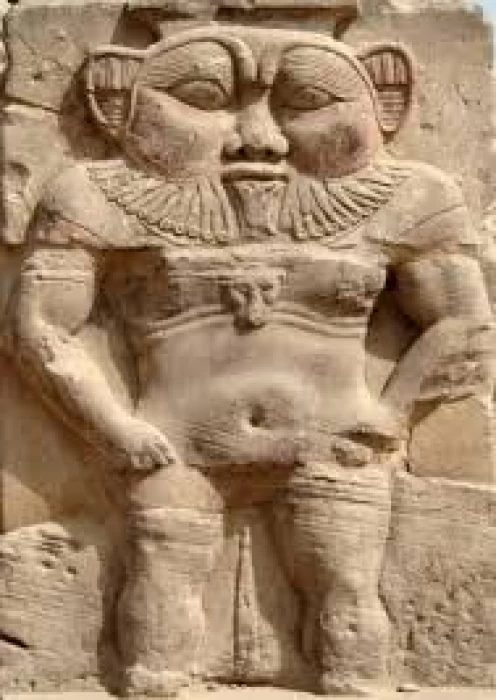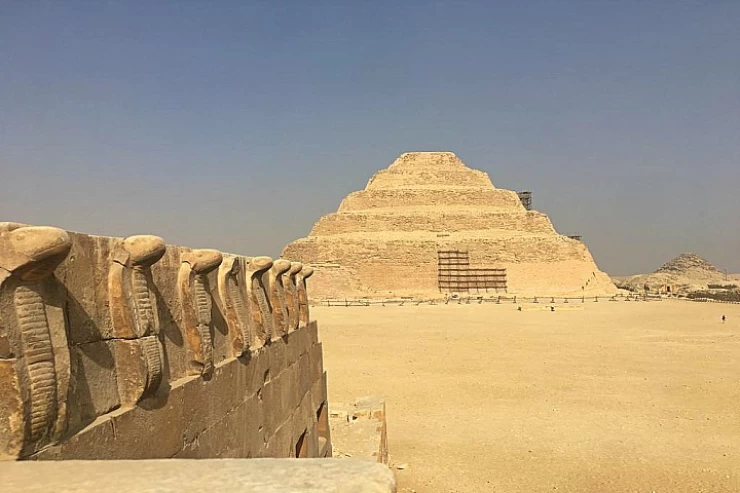
God of Childbirth | God Bes | Ancient Egyptian Dwarf God
Details about the ancient Egyptian dwarf god
The ancient Egyptians' daily lives were greatly impacted by the gods and goddesses. The fact that there were over 2,000 gods in the Egyptian pantheon is, therefore, hardly noteworthy.Certain deities, like Isis, Osiris, Horus, Amun, Ra, Hathor, Bastet, Thoth, Anubis, and Ptah, have well-known names, but many more are less well-known.
Often called the dwarf god, he is the god of war, humor, childbirth, and sexuality. One of the most well-liked gods in Egyptian mythology, he defended women and children, battled evil, and fought for justice and divine order. He is often depicted as a spirit (a "demon," but not at all in the modern sense of the word) rather than as a deity. However, he was respected as such and appeared on many commonplace items in Egyptian households, such as furniture, mirrors, and knife handles.
He was accompanied by Taouret, the hippopotamus goddess of childbirth and fertility. Bes is depicted as a bearded dwarf with large ears, prominent genitals, arched legs, and rattling. He is always represented in a frontal protection position, watching over his protégés.
At the funerary temple of Sethi I in Abydos, in a space dedicated to him, Bes gives oracles relating to the future of consultants and their concerns of daily life, such as their health, their travel plans, their social problems, family (marriages separations...), and professionals; it is also the interpreter of their dreams.
In the Greco-Roman period Bes became the protector of the dead by the same title of the god Osiris.
God Bes, is the only divinity represented exclusively in frontal perspective, it belonged to one of the minor deities in ancient Egypt most admirable to the popular imagination of the ancient Egyptians.
Bes, a divinity with demonic characteristics, is strangely a family divinity. Bes was a protector of the home and children, particularly linked to the critical phase of birth and the defense against harmful animals. This aspect was probably the most ancient. The natural sphere of action of the god Bes spread his image on a wide range of objects of the daily life of the ancient Egyptians from the headrests, in which he watched over the sleep of the helpless sleepers, to the personal care objects.
Bes's relations with dance and music were also very close, with which he relieved the angry goddesses. Connections with the solar cycle indicate it as a popular form of the solar god.
Bes is an ancient Egyptian fairy god, a composite being, both deity and satanic warrior. He was a god of war, but also a protector of childbirth and the home, and was associated with desire, entertainment, music, and dancing. Although his role originally appears to have been the pharaoh's guard, he increasingly became very famous among common people because he essentially protected women and children. He had no certain cult, so no temples or priests were established in his name. However, he was one of the most familiar of ancient Egyptians and was usually represented on household items.
The god "Bes" reflects an aspect of the ancient Egyptians' interest in fun and humor as a means of entertaining themselves in their daily lives, which were full of hard work and hardship.
The god "Bes" is the ancient Egyptian god of humor and fun. The ancient Egyptians chose for this god, humor, a form that provoked laughter and ridicule, as they formed him as a small dwarf with a full face and muscles, with his tongue sticking out of his mouth, combining the form of a human and a monkey, and his role was to bring joy to the king and the entourage in the royal councils
He only provided protection from danger, while at the same time warding off harm, and was able by his power to prevent evil according to the beliefs of the ancient Egyptians.
In critical circumstances he also appeased nature as told in the famous solar eye legend, when he stopped the wrath of the bloodthirsty goddess Hathor and offered her an alcoholic drink, with a plant-based drug added.
In a more specific field, it brought joy and had a certain regenerative importance that contributed to the achievement and happiness of family life in all aspects of procreation, from masculinity through fertility, to birth and growth. Protecting life and family also includes the healing powers of God only, both in terms of medical healing and magical purification.
The cult of Bes and the rituals surrounding its complex spiritual nature centered on different categories of ritual objects, maintaining certain stereotypical features with stylistic changes over several centuries.
Among these things, so-called vases played a major role. These vases are a class of ceramic vessels decorated with a doll or head, which spread in Egypt from the New Kingdom (16th to 11th centuries BC) to the Hellenistic or Ptolemaic era (330-30 BC) and the periods of the Roman Empire (30 BC). BC – 476 AD), when production peaked.
















